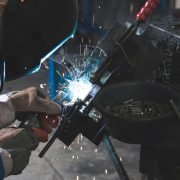Zirconia ceramics are chemically inert and highly heat-expandable, and have high wear resistance and crack propagation resistance. Made of zirconia ceramics, zirconia rods also have excellent properties such as resistance to falling, abrasion, super strong, super hard, high temperature, super corrosion resistance, never rust, oxidation resistance and insulation.
Zirconia ceramic rods are easy to maintain and require no paint or protective finish on the surface and cutting edges. This article will introduce the manufacturing process of zirconia ceramic rods.
Zirconia ceramic materials are widely used in instrumentation, medical equipment, watches, abrasive tools, energy and power, construction, mechanical hardware, automotive, military, aerospace and other fields. In addition, zirconia is widely used in thermal barrier coatings, catalyst carriers, medical, health care, refractory materials, textiles and other fields.
Ceramic rods are mainly divided into 4 types of molding methods. Each molding method has its own special features. They are isostatic molding, dry pressing, injection molding and hot press forming.
Isostatic Molding
Isostatic pressing is a forming method that applies pressure uniformly in all directions around the manufactured part. This is different from compression molding where pressure is only applied in one direction.
Process: fill the powder into the rubber mold→ isostatic pressing → sintering → grinding and polishing
Advantages: high density, good quality, high volume molding
Disadvantages: high cost, unable to make special shapes
Dry Pressing
Dry pressing is also known as compression molding. The ceramic powder particles undergo a certain displacement and deformation after being subjected to the extrusion force. During the extrusion process, as the pressure on the powder particles continues to increase, the powder particles are further extruded, and finally achieve densification.
Process: fill the powder to the rubber mold→ dry press forming → sintering → grinding and polishing
Advantages: special ceramic materials with special shapes and sizes can be made
Disadvantages: not mass production, suitable for small quantities
Injection Molding
Injection molding works by heating a thermoplastic polymer above its melting point, resulting in the conversion of the solid polymer into a molten fluid with a relatively low viscosity.
Process: purchase airflow powder → with chemical components → stir evenly → dry → break → injection molding
→ Discharge → Sintering → Post-processing
Advantages: special ceramic materials with special shapes and small sizes can be made, which can be mass-produced;
Disadvantages: Can not make products with large size
Hot Press Forming
Hot press forming increases the densification rate of the ceramic material by using an applied pressure of 10-30 MPa at the sintering temperature.
Process: first purchase airflow powder → with chemical components → stir evenly → put in material bucket → hot press forming → debinding → sintering → post processing
Advantages: easy to manufacture products with complex shapes
Disadvantages: not applicable to all materials








